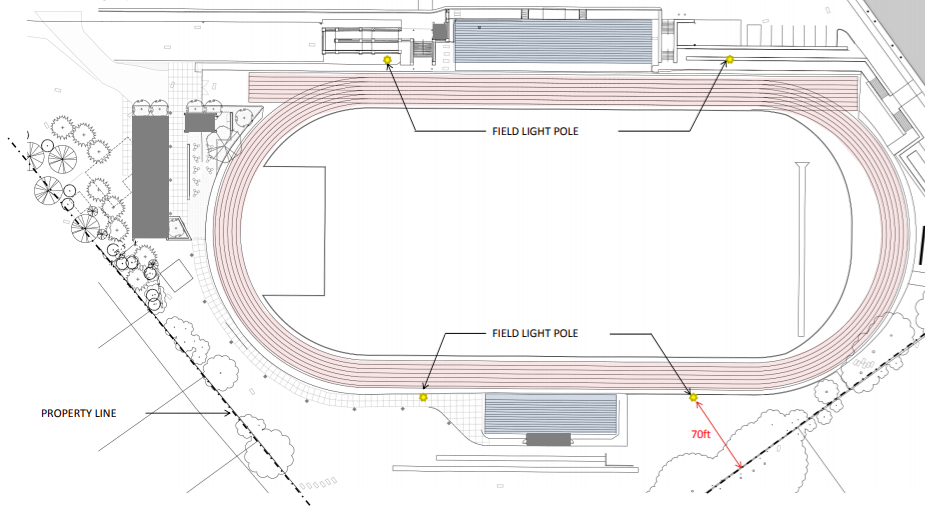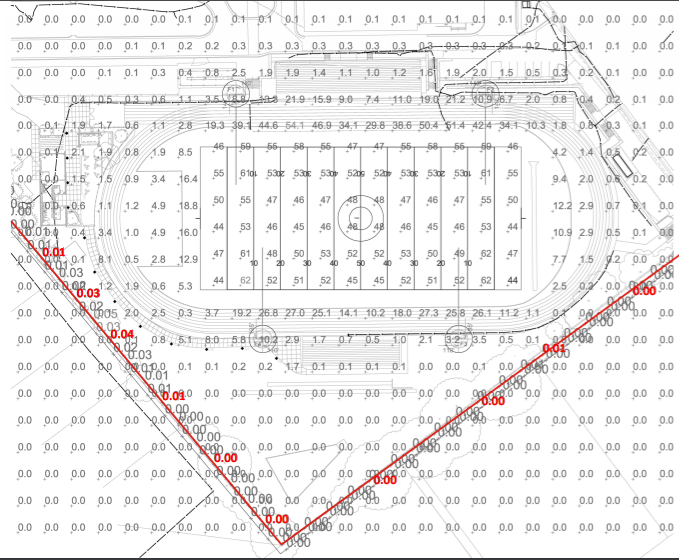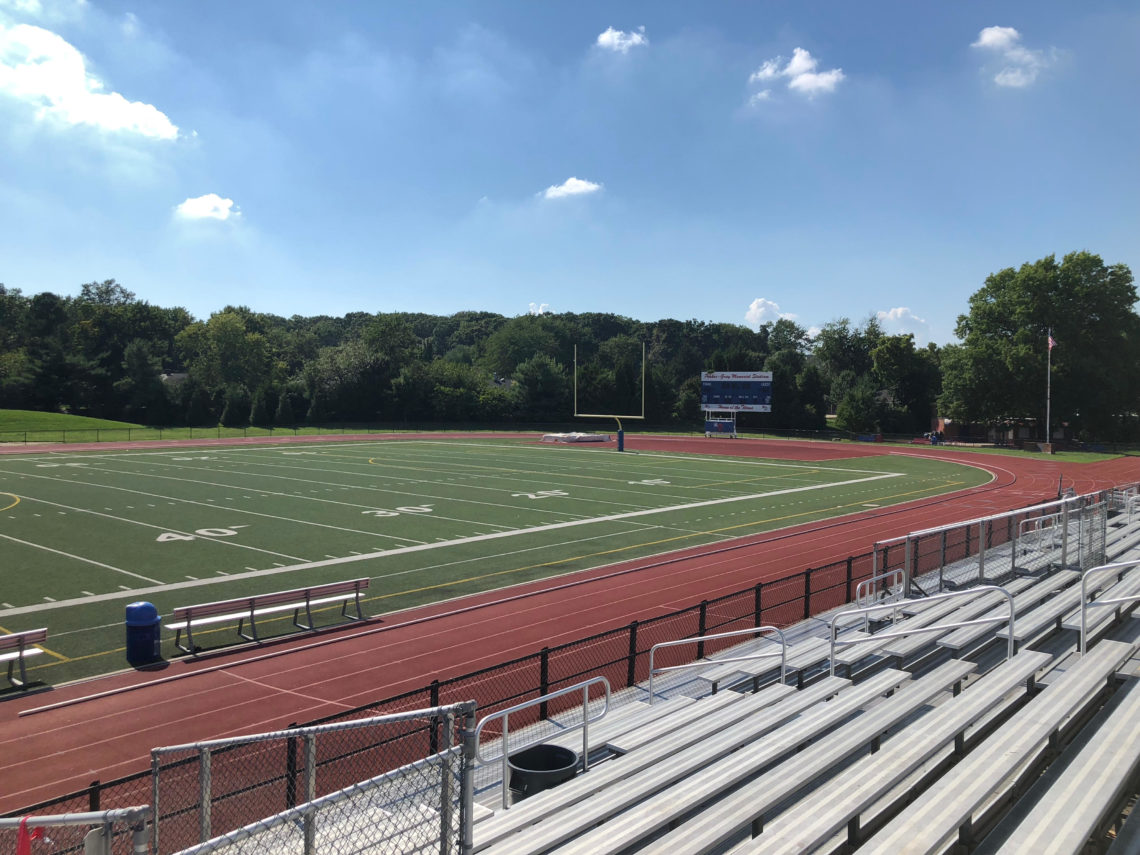Dispute Over TC Stadium Lights Turns to Lawsuit
Sadie Finn and Reagan Feld
Unlike in the rest of the nation, “Friday Night Lights” have never been a tradition in Alexandria. T.C.’s historic football team, made famous by the Disney movie Remember the Titans, is unable to compete on Friday nights because of the lack of lighting at its home stadium. The lighting at Parker-Gray Stadium has been a point of contention for as long as the school has existed. Last month, a lawsuit was filed by neighbors who oppose the installation of lights.
The plaintiffs, who are residents of Woods Avenue and Bishop Lane, sued the Alexandria City Public Schools (ACPS) and the City of Alexandria over the plans to build lights in the stadium.
The suit was alleges a breach of contract between the City of Alexandria and the community adjacent to T.C. The alleged contract relates to the construction of the original school from 1960-1965 in a section of Alexandria that was historically home to African-American families.
This action was a direct result of the Alexandria City School Board’s approval of a renovation and upgrade to Parker-Gray Stadium, which included a provision for stadium lights to illuminate the field.

The neighbors in close proximity to T.C. Williams assert that stadium lights would violate noise and light ordinances in the city, and interfere with the use and enjoyment of their homes.
The use of Parker-Gray Stadium after nightfall raises problems such as spillover light and increased noise, as well as the traffic that would negatively affect the lives of people living close to the stadium. The plaintiffs associated with the lawsuit declined to comment on the lights or the case.
Supporters of the lights project argue that the absence of stadium lights causes many problems for the school’s sports teams. Team practices are limited to daylight hours, the number of which decrease as the year progresses and days get shorter. In addition, any organization that wants to use the field must share it during these restricted times.
Scheduling also becomes an issue as all other Northern Virginia high schools play football games on Friday nights. Scheduling games on Saturday makes it hard for opposing teams to come to T.C. to play.
Principal Peter Balas said, “Some of my friends…remember playing football against T.C., and they remember being inconvenienced by having to come here at times that were not Friday night games.”
Athletic Director James Parker said, “Some of our sports are playing off-site, field hockey for example, and [with stadium lights] they would be able to play here, on T.C.’s main campus.”
Many sports teams currently practice and play off site at Minnie Howard or the fields at Witter. With lights, these teams would be able to play more at T.C.’s main campus.
Additionally, many at the school think that lights at Parker-Gray Stadium would help increase school spirit and attendance at the games.
“Parents are off from work [on Friday nights], so from a scheduling standpoint it helps us get more fans, because we will be able to hold our events at times that people are off from work and able to get [to T.C.],” said Parker.

This lack of lighting is due to a decade-old agreement between Alexandria City and the schools surrounding neighborhoods. When T.C. was first built in 1965, the land for the school was bought from an established community in the area. This acquisition of land for the high school by the Alexandria City government displaced many of the residents who had previously resided where the school was to be built. Additionally, the regulation minimum land requirement for a Virginia high school is 25 acres, and T.C. was built on only 23. Due to the both the inconvenience caused by the location of the school in a community and the close proximity of the school to the surrounding neighborhoods, the City of Alexandria agreed to never build stadium lights as it could possibly disrupt the lives of the neighbors.
This agreement was reaffirmed when the school was rebuilt in 2003. The neighbors then expressed concerns over the lights, and suggested the stadium be rebuilt on the other side of the campus as to not disrupt the community. The stadium was built in the same place, however, and the promise that the stadium would not be lighted was reaffirmed.
The lights became the subject of controversy again in 2012 when new tennis courts were built on the campus. The tennis courts received lights, unlike the football field. Permission for the lights on the tennis courts were allowed because spillover light and increased noise and traffic were focused on the side of T.C. along King Street, and would not affect the neighborhoods behind the school. Additionally, the courts were to be used by other members of the community who wanted to benefit from the facilities after dark.
The residents were aware that the lights would not interfere with their lives, but were afraid still of allowing the lights at the tennis courts. They believed yielding to the lights on the courts would not lead to appeasement of the school but instead prompt ACPS to ask for more, and start a movement to light the football field.
Since the plan for installing the lights were announced, there have been many community meetings in an attempt to find a compromise for the school and the neighborhood. “Having a lawsuit brings about conversation,” said Parker, “having conversations with the people who have issues with [the lights] and coming to an agreement to do what is best for the students here at T.C. Williams High School is what we have to aim for.”
“They are our neighbors and we want to be good neighbors, but at the same time I want my kids to have all aspects of the high school experience that they want,” said Balas.
Neighbors declined to comment.

